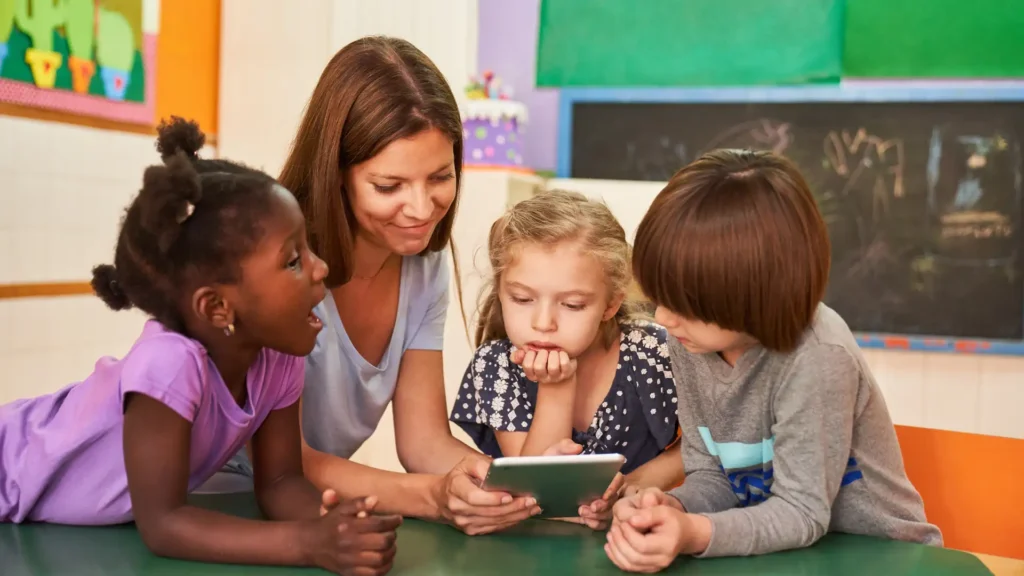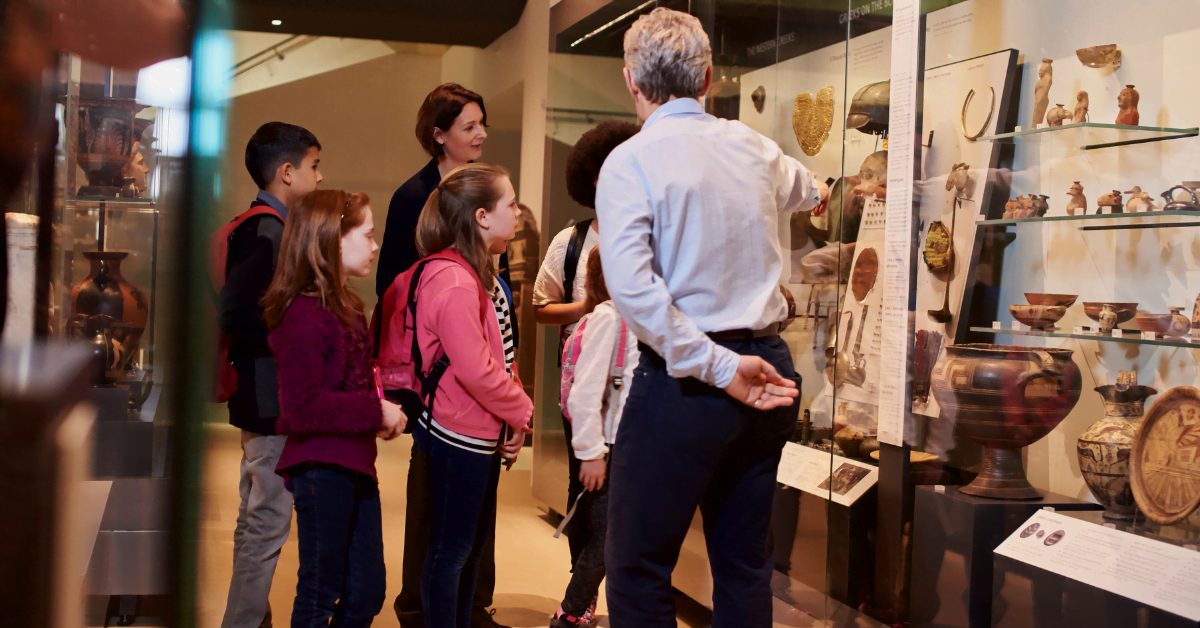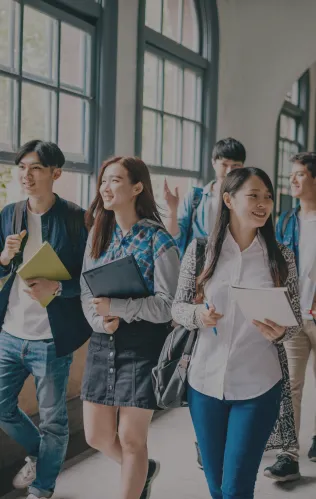COVID-19 and the sudden transition to socially distanced learning presented many challenges for schools. As we transition to a post-pandemic environment, many school leaders and educators are questioning which parts of online learning will continue and what will be left behind.
For many education professionals, the transition to post-COVID learning is an opportunity to reignite school spirit and launch academic experiences that were put on hold. Others are curious to experiment with which aspects of socially distanced learning they can continue to use in their normal teaching.
. To help your school get a sense of what education will look like, we teamed up with Doubleknot to put together this guide to explore four post-COVID educational trends that appear to be here to stay:
- Hybrid Communication
- Outside the Classroom Opportunities
- Accessible Content Libraries
- Virtual Tours
As you may have guessed, hybrid and online learning has become a new normal for many schools and will continue to be moving forward. The following trends highlight this change, as well as the elevated importance of online management and organizational tools. After all, schools balancing both in-person and online populations of students will need to carefully track each student’s educational development to ensure all students are afforded a quality education experience.

Hybrid Communication
Virtual teaching can be a challenge, limiting face-to-face interactions and in-person activities. However, while online teaching was a necessity during the lockdown, hybrid learning has increased in popularity as we transition to post-COVID education.
For some students, virtual communication only had minimal interference with their education and they would be happy to continue attending lessons from home. Meanwhile, others struggled with the distance. Fortunately, hybrid communication accommodates all students, allowing small groups of students to meet in person while the rest of the class attends online.
Hybrid communication can also extend to other aspects of well-rounded school life. For example, some schools may host socially distanced fundraisers or create virtual-only clubs for activities that can be held entirely online.
To maintain a positive hybrid environment, invest in communication tools and conferencing software. Then, provide your staff the necessary training before classes start. This should include basics, such as how to schedule meetings and more advanced tips such as incorporating multimedia into class presentations.
Outside the Classroom Opportunities
While technology and digital interactions have become major components of post-COVID education, field trips and learning experiences outside of the classroom can and should continue. Much can be gained from online learning, but in-person experiences such as trips to the zoo, museum visits, and nature appreciation days remain an unforgettable part of the school experience.
Before embarking on a trip outside of the classroom, make sure your students and staff take appropriate safety measures. You can keep your trip safe and organized by:
- Following health and safety guidelines. Stay updated on both local and national health and safety guidelines to ensure your students are protected. Make sure your students wear masks, wash their hands regularly, stay socially distanced, and follow any other required health practices that may remain even after the pandemic ends.
- Researching trip locations’ safety measures. Before making a reservation at an external location, make sure to review their health and safety practices. Research what they are already doing to make sure your students will be safe, and work with their staff to help your students follow the safety guidelines.
- Keeping parents and guardians informed. Parents and guardians should have the final say on whether they want their child to attend an opportunity outside of the classroom, where your school will not be in charge of health and safety. Share the health and safety guidelines from the location you plan to visit so they can stay informed and give their permission for their children to attend in advance.
Check-in with your chosen trip location’s plan to keep your school trip organized before you leave. For example, a museum should have the proper management tools to support group tickets that allow your group to be checked in at once, reducing waiting and check-in time during which volunteers will need to manage students.
Accessible Content Libraries
The shift to online learning resulted in many schools fully embracing digital content libraries for the first time. By putting learning materials up online, students have access to textbooks, assigned readings, and practice assignments whenever they need them. This practice opens the door for asynchronous learning methods, while also providing students with additional resources they may choose to pursue in their own time.
You can help your students further by ensuring your content library is always accessible. Your school can accomplish this and improve online learning through your content library with the following methods:
- Creating an accessible website. Ensure all of your students will have the same access to online materials by following accessibility best practices. Make sure your instructors have access to your school’s accessibility guidelines when they upload their courses’ content. For example, a professor might scan pages of reading and upload them as images, but may not think to provide a text alternative without a reminder from your guidelines.
- Using multimedia. Going virtual allows your teachers to get creative with how they present information to students. Morweb’s guide to school website builders recommends investing in a platform that prioritizes content flexibility, allowing your school to upload videos, powerpoints, and interactive activities with ease. As you add multimedia content, keep an eye on your page speed. While some web builders let users easily add multimedia, not all of them have optimization tools to keep your loading times short. Long load times may lead to students getting distracted, while short load times keep unnecessary waiting to a minimum.
- Providing free and low-cost access to course materials. Universities and educational institutions that normally require students to purchase books can help ease financial burdens by providing low-cost digital textbooks. While some students may still prefer to purchase a hard copy that they can physically bring to class and take notes in, others will appreciate the low-cost or free option. Plus, keeping all of your textbooks on a computer reduces the weight students will need to carry around from class to class.
You can also reach out to your library staff to discuss the possibility of digitizing previously physical-only books and materials for students to check out. This can improve overall accessibility to your content and ensures remote learners have the same opportunities to engage with your school’s materials as in-person students.
Virtual Tours
Schools that are hesitant to switch back to in-person outings can help recreate the field trip experience through virtual tours. These events allow students to be virtually guided through a unique location while receiving information from staff and professionals at the visited location.
Of course, some locations will better lend themselves to virtual tours than others. Here are a few that can really shine when presented virtually:
- Planetariums. While the planetarium dome, sound, and projection system create a truly immersive atmosphere, many provide visuals and curricular material designed especially for smaller remote screens.
- Zoos and aquariums. Zoos and aquariums found success setting up live feeds of exhibits long before COVID-19. This allows students to learn about animals and tour their habitats (and possibly even see behind the scenes!) without leaving their homes by switching from live feed to live feed.
- Museums. Students who visit history and art museums often benefit from having a well-educated guide present to explain the history and significance of each exhibit. Get in touch with a local museum arrange a virtual tour with one of their guides.
Schools with limited resources can effectively expand their outside-the-classroom experiences with virtual tours. Even as field trips become viable again, consider making virtual tours an option for faraway locations or places all of your students might not otherwise be able to visit.
COVID-19 has had a lasting impact on education, but moving forward, it doesn’t need to be a strictly negative one. Digital and hybrid learning can provide some students with more opportunities for furthering their education with accessible materials and virtual exploration.
Work with your school’s faculty and staff to maintain the positive aspects of socially distanced learning, and invest in the necessary software solutions to keep your school organized as you invest in a mix of virtual, in-person, and hybrid learning.
FAQ’s
Post-COVID educational experiences will likely incorporate a blend of in-person and online learning methods, with increased reliance on technology and hybrid communication to accommodate diverse student needs.
Classter’s SMS offer comprehensive tools for tracking student data, managing academic resources, facilitating communication, and organizing hybrid learning experiences, aiding schools in adapting to post-pandemic education.
Classter adheres to accessibility guidelines, offers multimedia resources, and provides low-cost access to digital textbooks, ensuring equal access to educational materials for all students.




